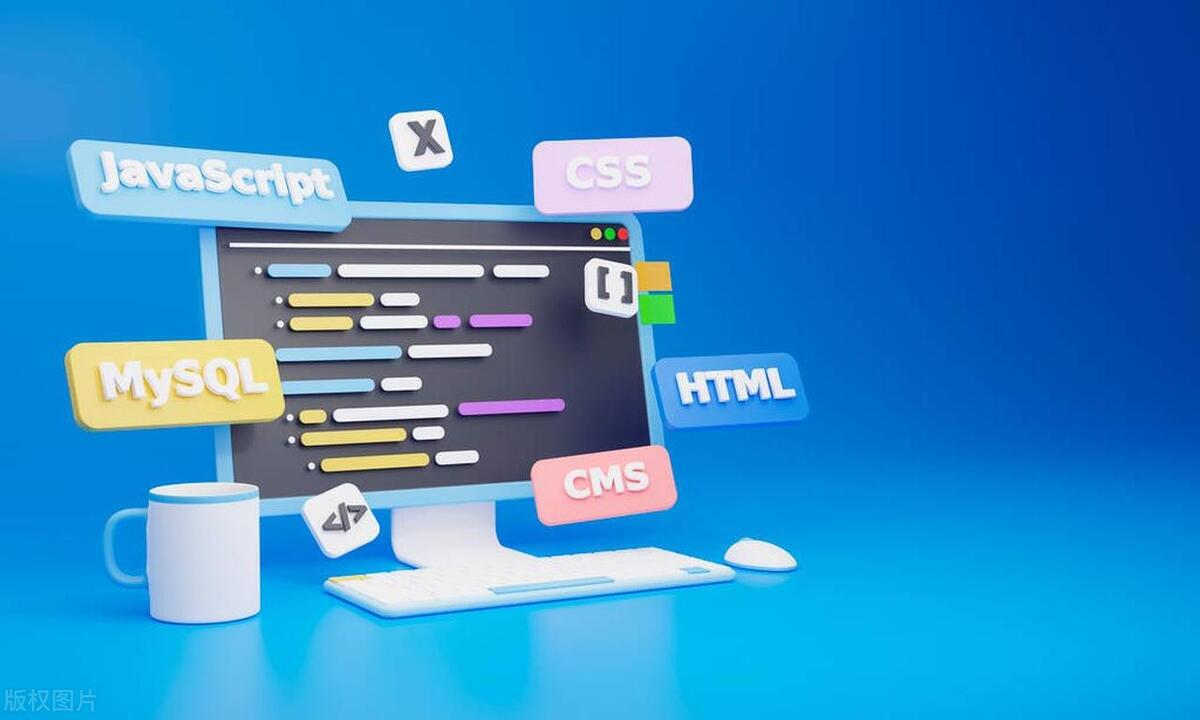Bundle Analysis is a key link in front-end optimization. It can clarify the composition of JavaScript packages, identify redundancy and guide optimization. To quickly view the Bundle composition, you can use Webpack Bundle Analyzer, source-map-explorer, or the corresponding plug-in for the build tool to generate visual charts; prioritize the production environment packaging results during analysis, and save records for easy version comparison. Common problems that cause Bundle bloat include full introduction of third-party libraries, duplicate dependencies, not enabling Tree Shaking, and excessive static resources. Optimization methods include code splitting chunks, configuring Tree Shaking to delete useless code, replacing large-volume libraries with lightweight versions, using automatic plug-ins on demand, and analyzing and eliminating duplicate dependencies. Auxiliary tools such as Source Map Explorer are used for code source analysis, BundlePhobia evaluates dependent volumes, and Lighthouse detects overall loading performance. Combined use of these tools can effectively improve optimization efficiency.

In front-end optimization, Bundle Analysis is a key but often underestimated link. Simply put, it helps you figure out what code your JavaScript package consists of, which part accounts for the majority, whether it is redundant, and whether it is possible to optimize it. If you find that the page loads slowly and the first screen is waiting for a long time, it is likely that the bundle is too large.

The following aspects are the most worthy of attention when doing Bundle Analysis and optimization.
How to quickly view the composition of a Bundle?
The most direct way is to use tools like Webpack Bundle Analyzer . After installation, configure the plug-in and run the packaging command, which will generate a visual treemap diagram that clearly shows the size and dependencies of each module.

In addition to Webpack, Vite, Rollup and other build tools also have similar plug-ins or ecological support. If you are using Create React App, you can directly analyze it through source-map-explorer or webpack-bundle-analyzer plug-in.
A few tips:

- Priority is given to analyzing the packaging results of the production environment. The chunk of the development environment often contains debugging information and is inaccurate.
- Save the analysis results to facilitate comparison of changes between different versions.
- If you use code splitting, remember to analyze the main package and other chunks separately.
What FAQs can cause Bundle to bloat?
After analyzing the bundle, you will find that many "big guys" can actually be optimized. Here are some common questions:
- The third-party library is too large : for example, moment, lodash, chart.js, etc. If only one or two methods are used and fully introduced, it will slow down the loading speed.
- Repeat the same library : For example, multiple dependencies have introduced lodash, but their versions are different, resulting in repeated occurrences during packaging.
- Tree Shaking is not used : Some libraries are not configured correctly, resulting in unused code being packaged.
- Too large static resources such as pictures and fonts : Although these do not belong to JS bundles, their size will also affect the overall loading performance.
The key to solving these problems is: streamlining dependency, introducing on demand, and reasonably splitting .
How to optimize the Bundle volume?
Optimizing a Bundle is not just "delete code", but requires strategic control of the packaged content. Here are some practical practices:
- Use Code Splitting : Split unimportant pages or components into separate chunks and load them on demand.
- Tree Shaking configuration is in place : Make sure your build tools recognize and remove useless code.
- Replace large-volume libraries as lightweight alternatives : for example, replace moment with day.js and replace part of fetch encapsulation with axios.
- Use automatic on-demand import plug-ins : such as babel-plugin-import, which automatically introduces component libraries (such as Ant Design) on-demand.
- Analyze duplicate dependencies : Use
depcheckoryarn whyto see which dependencies are introduced multiple times, try to unify the version or eliminate unnecessary dependencies.
For example, if you use lodash but only map and filter , you can consider introducing only these two methods:
import map from 'lodash/map'; import filter from 'lodash/filter';
Or use lodash-es Tree Shaking to automatically optimize.
What tools can assist in analysis and optimization?
In addition to the aforementioned Webpack Bundle Analyzer, there are some other tools that can help you understand your packaging situation more comprehensively:
- Source Map Explorer : Analyze the source of the final code through source map, which is suitable for troubleshooting which part of the code occupies volume.
- BundlePhobia : Enter the npm package name, which will tell you the volume and compressed size of the package, helping you evaluate the impact before introducing new dependencies.
- Lighthouse : Although it is not a tool that specializes in analyzing bundles, its "performance" score can tell you whether the loading speed meets the standard and indirectly reflect whether the bundle is reasonable.
These tools work together to let you understand your front-end resources from multiple perspectives.
Basically that's it. Bundle Analysis seems to be a technical job, but in fact, as long as you master a few key points, you can quickly discover problems and optimize them. Don't underestimate these details, their impact on loading speed and user experience is often greater than you think.
The above is the detailed content of Bundle Analysis for Frontend Optimization. For more information, please follow other related articles on the PHP Chinese website!

Hot AI Tools

Undress AI Tool
Undress images for free

Undresser.AI Undress
AI-powered app for creating realistic nude photos

AI Clothes Remover
Online AI tool for removing clothes from photos.

Clothoff.io
AI clothes remover

Video Face Swap
Swap faces in any video effortlessly with our completely free AI face swap tool!

Hot Article

Hot Tools

Notepad++7.3.1
Easy-to-use and free code editor

SublimeText3 Chinese version
Chinese version, very easy to use

Zend Studio 13.0.1
Powerful PHP integrated development environment

Dreamweaver CS6
Visual web development tools

SublimeText3 Mac version
God-level code editing software (SublimeText3)
 How does React handle focus management and accessibility?
Jul 08, 2025 am 02:34 AM
How does React handle focus management and accessibility?
Jul 08, 2025 am 02:34 AM
React itself does not directly manage focus or accessibility, but provides tools to effectively deal with these issues. 1. Use Refs to programmatically manage focus, such as setting element focus through useRef; 2. Use ARIA attributes to improve accessibility, such as defining the structure and state of tab components; 3. Pay attention to keyboard navigation to ensure that the focus logic in components such as modal boxes is clear; 4. Try to use native HTML elements to reduce the workload and error risk of custom implementation; 5. React assists accessibility by controlling the DOM and adding ARIA attributes, but the correct use still depends on developers.
 Describe the difference between shallow and full rendering in React testing.
Jul 06, 2025 am 02:32 AM
Describe the difference between shallow and full rendering in React testing.
Jul 06, 2025 am 02:32 AM
Shallowrenderingtestsacomponentinisolation,withoutchildren,whilefullrenderingincludesallchildcomponents.Shallowrenderingisgoodfortestingacomponent’sownlogicandmarkup,offeringfasterexecutionandisolationfromchildbehavior,butlacksfulllifecycleandDOMinte
 What is the significance of the StrictMode component in React?
Jul 06, 2025 am 02:33 AM
What is the significance of the StrictMode component in React?
Jul 06, 2025 am 02:33 AM
StrictMode does not render any visual content in React, but it is very useful during development. Its main function is to help developers identify potential problems, especially those that may cause bugs or unexpected behavior in complex applications. Specifically, it flags unsafe lifecycle methods, recognizes side effects in render functions, and warns about the use of old string refAPI. In addition, it can expose these side effects by intentionally repeating calls to certain functions, thereby prompting developers to move related operations to appropriate locations, such as the useEffect hook. At the same time, it encourages the use of newer ref methods such as useRef or callback ref instead of string ref. To use Stri effectively
 Vue with TypeScript Integration Guide
Jul 05, 2025 am 02:29 AM
Vue with TypeScript Integration Guide
Jul 05, 2025 am 02:29 AM
Create TypeScript-enabled projects using VueCLI or Vite, which can be quickly initialized through interactive selection features or using templates. Use tags in components to implement type inference with defineComponent, and it is recommended to explicitly declare props and emits types, and use interface or type to define complex structures. It is recommended to explicitly label types when using ref and reactive in setup functions to improve code maintainability and collaboration efficiency.
 Server-Side Rendering with Next.js Explained
Jul 23, 2025 am 01:39 AM
Server-Side Rendering with Next.js Explained
Jul 23, 2025 am 01:39 AM
Server-siderendering(SSR)inNext.jsgeneratesHTMLontheserverforeachrequest,improvingperformanceandSEO.1.SSRisidealfordynamiccontentthatchangesfrequently,suchasuserdashboards.2.ItusesgetServerSidePropstofetchdataperrequestandpassittothecomponent.3.UseSS
 A Deep Dive into WebAssembly (WASM) for Front-End Developers
Jul 27, 2025 am 12:32 AM
A Deep Dive into WebAssembly (WASM) for Front-End Developers
Jul 27, 2025 am 12:32 AM
WebAssembly(WASM)isagame-changerforfront-enddevelopersseekinghigh-performancewebapplications.1.WASMisabinaryinstructionformatthatrunsatnear-nativespeed,enablinglanguageslikeRust,C ,andGotoexecuteinthebrowser.2.ItcomplementsJavaScriptratherthanreplac
 Vue CLI vs Vite: Choosing Your Build Tool
Jul 06, 2025 am 02:34 AM
Vue CLI vs Vite: Choosing Your Build Tool
Jul 06, 2025 am 02:34 AM
Vite or VueCLI depends on project requirements and development priorities. 1. Startup speed: Vite uses the browser's native ES module loading mechanism, which is extremely fast and cold-start, usually completed within 300ms, while VueCLI uses Webpack to rely on packaging and is slow to start; 2. Configuration complexity: Vite starts with zero configuration, has a rich plug-in ecosystem, which is suitable for modern front-end technology stacks, VueCLI provides comprehensive configuration options, suitable for enterprise-level customization but has high learning costs; 3. Applicable project types: Vite is suitable for small projects, rapid prototype development and projects using Vue3, VueCLI is more suitable for medium and large enterprise projects or projects that need to be compatible with Vue2; 4. Plug-in ecosystem: VueCLI is perfect but has slow updates,
 How to manage component state using immutable updates in React?
Jul 10, 2025 pm 12:57 PM
How to manage component state using immutable updates in React?
Jul 10, 2025 pm 12:57 PM
Immutable updates are crucial in React because it ensures that state changes can be detected correctly, triggering component re-rendering and avoiding side effects. Directly modifying state, such as push or assignment, will cause React to be unable to detect changes. The correct way to do this is to create new objects instead of old objects, such as updating an array or object using the expand operator. For nested structures, you need to copy layer by layer and modify only the target part, such as using multiple expansion operators to deal with deep attributes. Common operations include updating array elements with maps, deleting elements with filters, adding elements with slices or expansion. Tool libraries such as Immer can simplify the process, allowing "seemingly" to modify the original state but generate new copies, but increase project complexity. Key tips include each






